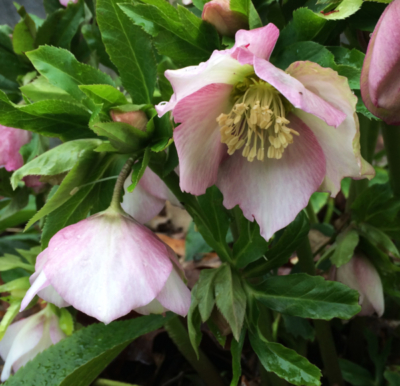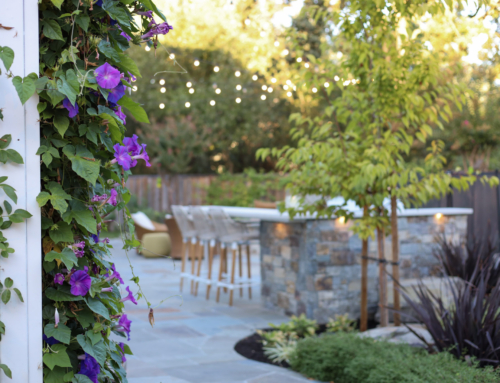The Early Spring Garden
The Groundhog has spoken, the verdict is in. 2020 will have an early Spring! Whether or not we trust the Groundhog, we have to admit that we are all ready for Winter to be over, to get our hands back in the dirt and our minds back in the garden. Lucky for our Spring fever, this is a good time to enjoy botanical harbingers of Spring as they emerge from Winter sleep. In this season of romance, we always find ourselves falling pretty hard for those first flowering plants. What can we say? They are just so easy to love.
Magnolia Dreaming
One of the earliest reminders that Spring is near is the striking Magnolia. Many varieties exist, but our favorites would have to be those which flower on bare wood. How can you beat bare Winter branches bejeweled with sudden blooms? Some of the earliest Magnolias to bloom are the stellata species and hybrids (Star Magnolias.) Their starry flowers also are some of the most fragrant. We particularly love them planted against a dark backdrop, such as an evergreen screen, for an ethereal floating-flower effect. Magnolia x soulangiana is soon to follow in bloom, with prolific deep pink flowers en masse. Magnolia denudata is our go-to for a large deciduous variety. Reaching up to 30 feet tall, this gorgeous specimen is literally covered in large, white, tulip-shaped blossoms, as captured in the image above.
Quince Passion
Image: Gardencrossings.com
On dark, rainy days, colors seem to have a different quality. This is when Flowering Quinces (Chaenomeles species and cultivars) really shine! Quince flowers range in color from white to salmon to rich pinks and reds. Recently-coined “Double Take” hybrids feature double flowers with layered petals, such as this stunning varietal shown above. We are just crazy for the way this color, sold as “Double Take Peach,” interacts with other colors in the landscape, from burgundy to silver to lavender. These aren’t the same quinces you eat in pastry or in Membrillo quince paste, which are the fruits of the Cydonia oblonga tree, but Chaenomeles fruits can be made into a lovely jam.
Hardy Hellebores
Flowers that tough it out through the cold have a special place in our hearts. Helleborus species and cultivars love our rainy Bay Area winters and will flower as early as January in temperate zones. Showy orientalis hybrids occupy most nursery shelves. However, wild species of Hellebore are increasing in popularity. This fantastic article from Pacific Horticulture introduces Hellebores that are easy to fall in love with! If your garden is accessed by curious pets or small children, be careful growing these as they are poisonous. If that’s not the case, our only warning is that you can easily get addicted to collecting these beauties.
Early Edibles
Sometimes we find beauty in unexpected places. This happened last year when our early Spring veggie garden produced some of the most gorgeous lettuces we had ever seen! These “Ruby Gem” lettuces are a cold-weather veggie that can be sown in Winter for a quick crop that finishes before your tomatoes are even starting. Other cold-weather garden favorites include radishes, peas, fava beans, spinach, and arugula. These crops actually thrive in the cold and taste better with a little frost. Just keep an eye out for snails.
To all of our readers, we’d like to extend a thank-you for following our blog and sharing in the gardening passion! Montgomery Robbins is currently in the running for Nextdoor’s 2020 Neighborhood Favorites competition. If you’d like to show us some love, simply head to Nextdoor and type “Montgomery Robbins” in the category for “Professional Service Pro.” XOXO! -The Team

To Vote, look for the blue Professional Service Pro category and simply type in “Montgomery Robbins.”










